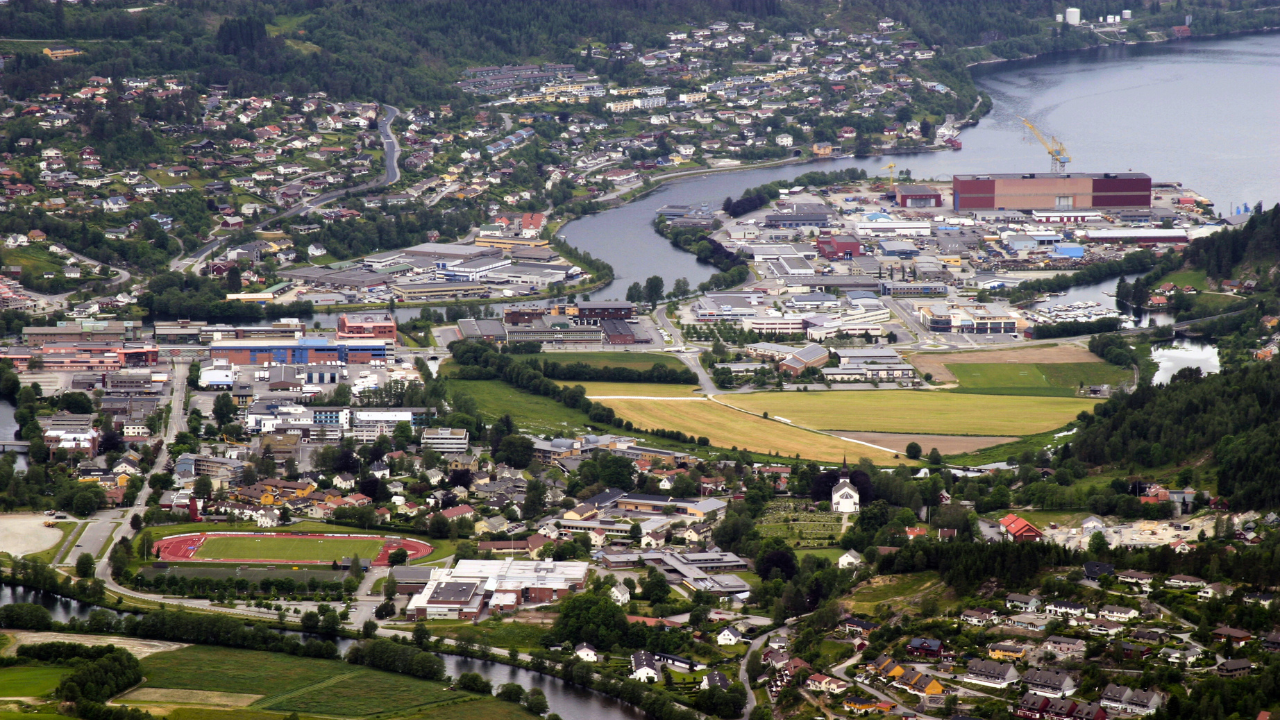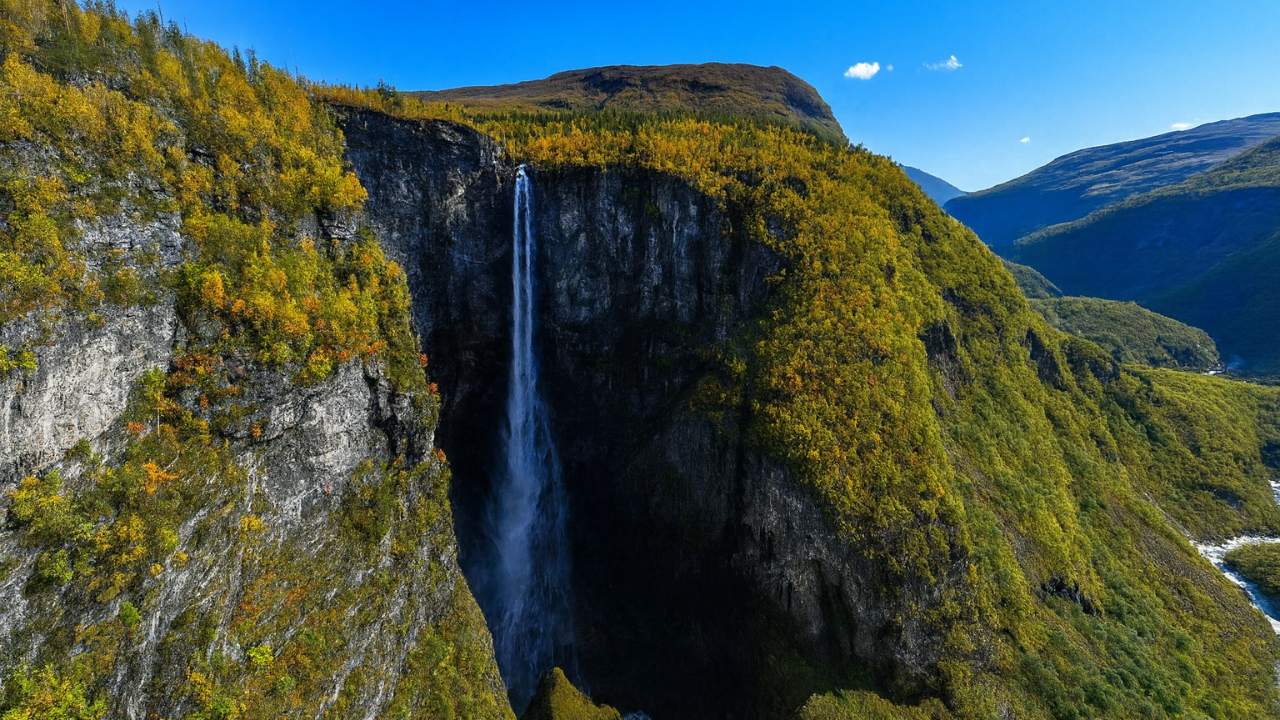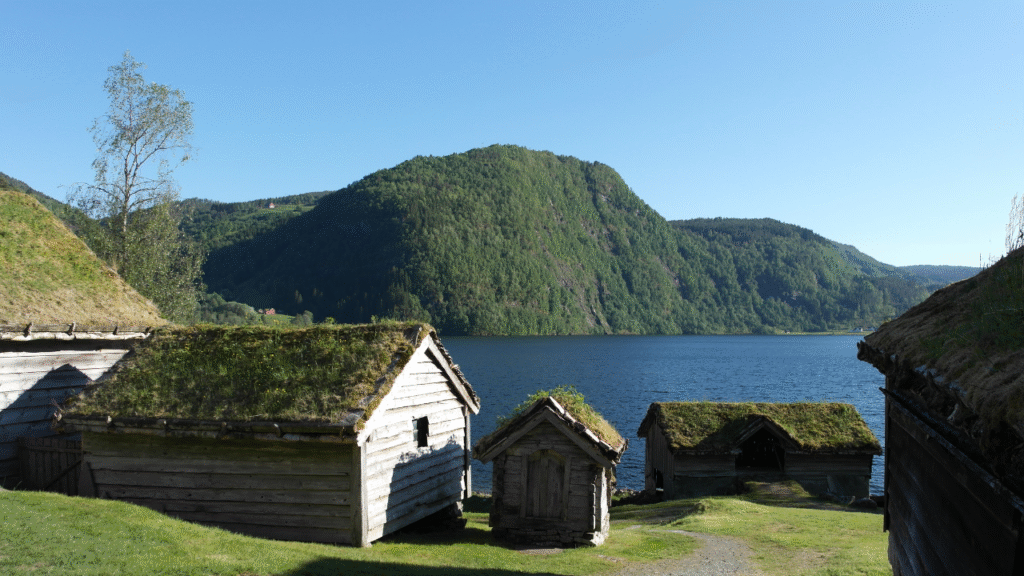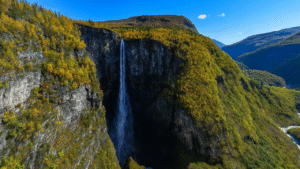Estimated reading time: 12 minutes
Key Takeaways
- Sogn og Fjordane region combines fjords, waterfalls, and alpine valleys with trails for all experience levels
- Førde serves as an ideal base for hiking adventures with excellent facilities and transport connections
- The region offers unique glacier views, including arms of Europe’s largest mainland glacier, Jostedalsbreen
- Vettisfossen, Norway’s tallest waterfall at 275 meters, provides spectacular hiking destinations
- Diverse trails range from gentle coastal walks to challenging mountain ascents like Skåla peak
- The Sognefjord, world’s deepest and longest fjord, creates dramatic hiking backdrops
Table of Contents
- Introduction
- Hiking in Sogn og Fjordane – Trails and Natural Wonders
- Førde – Your Ideal Norway Hiking Base
- Essential Hiking Tips for Norway
- Conclusion
Introduction
Western Norway’s Sogn og Fjordane region represents the perfect marriage of dramatic fjords and soaring mountain peaks, creating a hiking paradise where glaciers meet the sea and waterfalls plunge from impossible heights. This extraordinary landscape offers visitors the quintessential Norwegian experience, where every trail reveals new perspectives on the country’s most iconic natural features.
At the heart of this magnificent region lies Førde, a charming town that serves as the ideal base for exploring the diverse hiking opportunities that Sogn og Fjordane has to offer. From gentle coastal walks to challenging alpine ascents, this area caters to every type of outdoor enthusiast while providing convenient access to some of Norway’s most spectacular natural wonders.
What makes hiking in Sogn og Fjordane truly special is the incredible variety packed into a relatively accessible region. Here, you can witness Europe’s largest mainland glacier, stand before Norway’s tallest waterfall, and enjoy panoramic views over the world’s deepest fjord—all while following well-maintained trails that showcase the very best of Norwegian wilderness.
Whether you’re seeking a peaceful valley walk through wildflower meadows or an adrenaline-pumping ascent of a glacier-topped peak, Sogn og Fjordane delivers experiences that capture the essence of what makes Norway one of the world’s premier hiking destinations.
Want to see this for yourself? Click here to watch the video from this point.
Hiking in Sogn og Fjordane – Trails and Natural Wonders
The region of Sogn og Fjordane offers some of Norway’s most diverse landscapes for hikers. This area provides the quintessential Norwegian experience where dramatic fjords, thundering waterfalls, and alpine valleys create a playground for outdoor enthusiasts. What makes hiking in Sogn og Fjordane special is the variety of terrain packed into a relatively accessible area.
This region is home to the world’s deepest and longest fjord, the Sognefjord, which cuts dramatically into the mainland, creating steep mountains that plunge directly into crystal-clear waters. These unique geographic features have shaped a network of trails that showcase Norway’s natural beauty from every angle.
Diverse Trails for Every Experience Level
Sogn og Fjordane caters to hikers of all abilities with a range of trail options:
Easy Walks
- The King’s Road (Kongevegen) – This historic route through Filefjell offers a well-maintained path with gentle gradients and cultural landmarks along the way. Perfect for families and casual hikers seeking both scenery and history.
- Briksdal Glacier Trail – A relatively gentle 3km walk brings visitors close to an arm of Europe’s largest mainland glacier, Jostedalsbreen.
- Coastal paths near Florø – Easier walks along the North Sea coastline reveal a different side of Norwegian nature.
Intermediate Hikes
- Molden – This moderate 3-4 hour round trip near Luster rewards hikers with panoramic views over the Lustrafjord branch of the Sognefjord.
- Aurlandsdalen Valley – Often called “Norway’s Grand Canyon,” this valley offers dramatic scenery with reasonable difficulty.
- Utladalen Valley hikes – Trails leading to and around Norway’s tallest waterfall, Vettisfossen (275m), offer stunning views without extreme difficulty.
Challenging Routes
- Skåla – The route to this 1,848-meter peak involves 1,800 meters of elevation gain in about 8km, testing endurance but rewarding with spectacular fjord views [SOURCE].
- Lovatnet Lake to Skåla – A demanding route through varied landscapes requiring good navigation skills.
- Hurrungane Mountains – For experienced mountaineers, these jagged peaks offer technical challenges amid breathtaking scenery.
Unique Natural Features
What sets hiking in this region apart are the natural wonders encountered along the trails:
- Glacier views – Many hikes offer glimpses of the massive Jostedalsbreen glacier and its many arms.
- Waterfalls – The region boasts numerous spectacular falls, including Vettisfossen, which drops 275 meters in a single cascade.
- Fjord perspectives – Trails frequently provide viewpoints over the deep blue waters of Norway’s most famous fjords.
- Alpine flowers – During summer months, the hillsides burst with colorful wildflowers, especially in July.
Many visitors combine hiking with other activities like kayaking in the fjords or cycling along scenic routes, making Sogn og Fjordane a versatile destination for outdoor enthusiasts seeking variety in their adventure.
Førde – Your Ideal Norway Hiking Base

Located in the heart of Sogn og Fjordane county, the town of Førde offers hikers an ideal strategic location from which to explore Norway’s dramatic western landscapes. While perhaps less famous than other Norwegian destinations, this regional center provides all the necessary amenities and connections that make it an excellent Førde Norway hiking base for your adventures.
Strategic Location for Sogn og Fjordane Hiking
Førde’s position makes it perfect for accessing diverse hiking areas:
- Just 1.5 hours drive from Jostedalsbreen National Park and its accessible glacier arms
- Under 2 hours to the famous Sognefjord and its numerous hiking trails
- Close proximity to the Sunnfjord mountains with less-crowded but equally beautiful trails
- About 3 hours from Jotunheimen National Park, allowing for day trips to Norway’s highest mountains
- Near coastal trails with different landscapes and wildlife viewing opportunities
This central position allows hikers to experience a variety of Norwegian landscapes without constantly changing accommodations, making Førde an efficient base for exploring Western Norway’s natural diversity.
Excellent Facilities
As a regional center, Førde offers important amenities for hikers:
- Accommodation options ranging from hotels to budget-friendly hostels and camping facilities
- Well-stocked outdoor shops selling hiking gear, maps, and equipment you might have forgotten
- Supermarkets and bakeries for stocking up on trail supplies and preparing packed lunches
- Medical facilities including a hospital – an important safety consideration for remote adventures
- Tourist information center with knowledgeable staff who can recommend appropriate trails based on conditions and your experience level
Transport Connections
Førde’s transportation network makes it accessible and convenient:
- Regular bus connections to Bergen, Ålesund, and Oslo
- Close proximity to Førde Airport with flights to/from Oslo
- Car rental facilities for flexible exploration
- Local buses that connect to smaller villages and trailheads
- Taxi services for reaching more remote starting points
These transport options mean you can reach Førde easily from Norway’s main cities and then use it as a launching point for daily adventures throughout the region without needing to drive long distances.
Local Hiking Knowledge
One of Førde’s greatest assets for hikers is access to local expertise:
- The tourist information office provides up-to-date trail conditions and weather forecasts
- Local hiking groups sometimes welcome visitors to join their outings
- Established guiding services can be arranged for more challenging routes
- Access to detailed maps and guides specific to the region
This local knowledge helps visitors discover less-known but spectacular trails that might not appear in international guidebooks, allowing for more authentic experiences away from the most crowded tourist spots.
Using Førde Norway hiking base for your adventures provides a comfortable balance between access to wilderness and modern conveniences, making it particularly suitable for hikers who want to experience multiple aspects of Norwegian nature without sacrificing comfort or spending excessive time on transportation between destinations.
Essential Hiking Tips for Norway

Hiking in Norway offers incredible rewards but also presents unique challenges. Following these essential guidelines will help ensure a safe and enjoyable experience in Norway’s magnificent wilderness.
Weather Preparedness
Norwegian mountain weather is notoriously changeable, requiring specific preparation:
- Layer your clothing using the three-layer principle: base layer (moisture-wicking), insulating layer (wool or fleece), and outer layer (waterproof and windproof)
- Always pack extra warm clothes, even on sunny summer days
- Check weather forecasts from reliable sources like yr.no (Norwegian Meteorological Institute)
- Be prepared to turn back if conditions deteriorate
- Start early to allow buffer time in case of weather changes
The Norwegian saying “Det finnes ikke dårlig vær, bare dårlige klær” (There’s no such thing as bad weather, only bad clothing) reflects the local approach to outdoor activities in all conditions.
Essential Gear
Beyond standard hiking equipment, consider these Norway-specific items:
- Waterproof hiking boots with good ankle support for rocky, often wet terrain
- Trekking poles to help with steep descents and stream crossings
- Mosquito repellent (essential in summer, especially in forested areas)
- Detailed topographic maps and compass (don’t rely solely on phone GPS)
- Headlamp with extra batteries (particularly important in late season when daylight shortens)
- High-energy snacks like chocolate, nuts, and dried fruits
- Water bottle or hydration system (while mountain water is often drinkable, carry water treatment if unsure)
Trail Navigation and Safety
Norway uses a specific trail marking system that hikers should understand:
- Look for red “T” marks painted on rocks and trees along DNT (Norwegian Trekking Association) routes
- Stone cairns (varder) often mark paths above the treeline
- Always stay on marked trails unless you have advanced navigation skills
- Inform someone of your planned route and expected return time
- Consider joining guided hikes for more challenging routes or if you’re new to Norwegian mountains [SOURCE]
DNT Cabins and Resources
The Norwegian Trekking Association (DNT) maintains an extensive network of mountain cabins that hikers should know about:
- Staffed lodges (betjente hytter) offer meals and accommodation
- Self-service cabins (selvbetjente hytter) provide beds, food for purchase, and cooking facilities
- No-service cabins (ubetjente hytter) offer basic shelter
- Consider purchasing a DNT membership for discounted stays and support of trail maintenance
- The DNT route planner (UT.no) is an invaluable resource for planning hikes
Environmental Responsibility
Norway’s pristine wilderness depends on visitors following key principles:
- Practice “Leave No Trace” ethics: pack out all trash
- Respect the allemannsretten (right to roam) by following its responsibilities
- Close gates behind you when crossing farmland
- Keep distance from wildlife, especially during breeding seasons
- Use established fire sites only and check local fire restrictions
By following these guidelines, you’ll not only ensure your own safety but also help preserve Norway’s natural beauty for future generations of hikers.
Frequently Asked Questions about Sogn og Fjordane Hiking
When is the best season for hiking in Sogn og Fjordane and Western Norway?
The prime hiking season in Western Norway runs from late spring through early autumn, with Sogn og Fjordane trails offering varied conditions depending on the time of year. For dramatic waterfalls, May and June are ideal as snowmelt feeds cascades, while late June through August provides more stable, mild weather for longer treks.
How do I travel to Sognefjord hiking trails and the Jostedalsbreen glacier area?
Sogn og Fjordane has regional airports at Førde, Sogndal, Sandane, and Florø, and well-connected ferry and bus routes across fjord-cut terrain. From Førde, major hiking destinations such as Jostedalsbreen National Park and the Sognefjord region can be reached within 1.5–2 hours by road or public transport, making them highly accessible Western Norway hiking destinations.
Which Sogn og Fjordane trails are suitable for families and easy hiking routes?
Gentle hiking routes include the historic King’s Road (Kongevegen) with cultural landmarks, the short Briksdal Glacier trail, and relaxed coastal paths near Florø. These easy walks allow families and casual hikers to experience fjord landscapes without steep ascents or advanced skills.
What hiking gear and safety tips are recommended for Sogn og Fjordane trails?
Because mountain weather shifts quickly, hikers should dress in layers, carry rain and wind protection, and pack extra warm clothing even in summer. Waterproof boots, navigation tools such as maps and compass, and an early start are recommended for safety. Always be ready to adjust plans or turn back if conditions worsen on Sogn og Fjordane routes.
Which lesser-known hiking trails in Sogn og Fjordane are worth exploring?
Yes. From Førde you can reach quieter trails such as the Sunnfjord mountains, Utladalen and Aurlandsdalen valleys, and demanding peaks like Skåla. Local tourist offices, hiking groups, and guiding services can help uncover authentic routes beyond the main tourist highlights, giving you a more rewarding Norway fjord hiking experience.
Conclusion
The Sogn og Fjordane region, with Førde as your ideal Norway hiking base, delivers one of the most complete hiking experiences in Western Norway. From the dramatic drop of Vettisfossen waterfall to glacier-carved valleys and panoramic fjord viewpoints, the area combines accessibility with breathtaking natural diversity.
What sets this destination apart is its balance between authentic wilderness and practical conveniences. Staying in Førde means reliable transport links, a wide range of accommodations, and access to local expertise—while still being within easy reach of challenging peaks, gentle valley walks, and glacier viewpoints. This combination makes Sogn og Fjordane one of the top Western Norway hiking destinations for both first-time visitors and seasoned trekkers.
Whether your goal is a peaceful fjordside stroll, a demanding ascent of Skåla, or an unforgettable encounter with the Jostedalsbreen glacier, the variety of Sogn og Fjordane hiking trails ensures that every adventure reveals something new. Add in the warm hospitality of local communities and the region becomes more than just a hiking spot—it is a gateway to the heart of Norway’s fjord landscapes.
As you plan your journey, remember to choose the best time to visit Norway for optimal conditions. To continue exploring beyond Sogn og Fjordane, see our related guides on Lofoten hikes, Bergen fjord walks, and Trolltunga adventures. These complement the trails, glaciers, and waterfalls described here and will help you design a complete Norway fjord hiking itinerary.
For more inspiration, visit the Pathfinders Travel YouTube channel, where our travel documentaries showcase Norway’s epic fjords and mountains in cinematic 4K.


